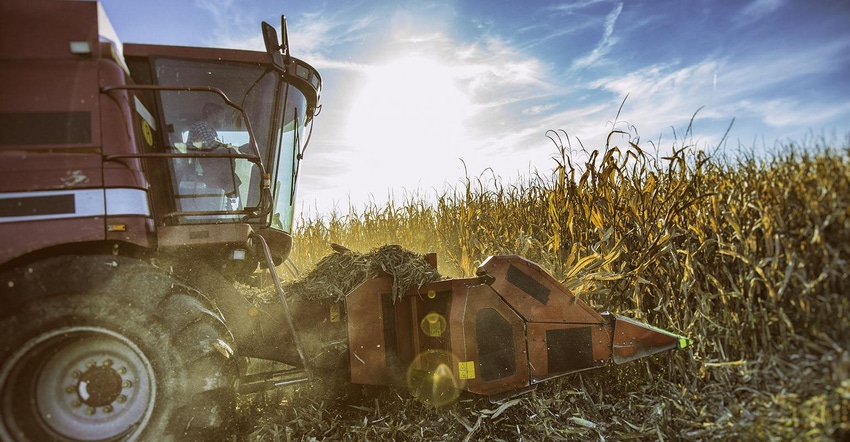
On March 9, Channel Seed and Farm Progress invited me to speak at Commodity Classic in Orlando. Over 700 grain producers from all over the Corn Belt and Canada attended this “Early Riser” session. What topic did I address with this esteemed group? I talked about the same topic I introduced in my March column, the signs of a fundamentally strong market.
There are three, and they are still relevant.
rising futures prices
a strong or improving basis
a narrowing spread - a decreasing positive carry or an increasing inverse
I made the same argument that I made last month. Basis and an inverted May-July spread indicate a fundamentally strong market for corn and soybeans. I am reasonably comfortable with the choice to continue holding last year’s crop in storage, to wait for higher prices in April, May or June. Of course, market prices traded sharply lower the next day – a reminder to yours truly to stay humble.
Allow me to update, modify and review the argument and consider implications for 2023 new crop prices. To keep things short, I will focus on the corn market but the conclusions reached apply equally to the soybean market.
The first table shows all years since 1990 when the March-July corn spread was inverted on March 1. In the March column, I looked at changes in the July futures contract from February to June (it traded higher in 4 of 5 years). I modified the analysis to look at cash price changes from March to June. Cash prices incorporate all-important changes in basis, as well as futures.
This modified analysis shows cash prices trading higher in 3 of 5 years. Two of those years (1996 and 2021) were sharply higher. The two down years (1997 and 2013) were far from sharply lower. I don’t think there are many grain producers who will be grossly disappointed if the corn they have in storage today is sold for a price that is 10-20 cents lower in 2-3 months.
My conclusion? I am comfortable with the choice to continue holding old crop grain in search of higher prices in the next 2-4 months. A move towards sharply higher prices will need a catalyst, and I don’t know what that would be or if one will occur. Holding unpriced grain is never a guaranteed winner, but I like to think that the downside risk is modest.
For the Early Riser session in Orlando, I decided to take the analysis one step further and consider new crop price prospects (i.e., December corn futures) in years when the May-July spread is inverted on March 1. These results are shown in the second table. In all five of the selected years, the new crop December contract traded lower from May 1 (planting) to October 1 (harvest). Am I suggesting that there is a 100% chance of new crop prices trading lower into next harvest? Absolutely not. Despite the record of these five years, nothing is 100% in grain markets. But it is a reminder to pay attention to new crop pricing opportunities in the months ahead.
Cash Corn Prices, 1990-2023
Years when the March-July spread is inverted on March 1
(Iowa average prices, $/bu.)
Contract delivery | March 1 May-July inverse* | March 1 Cash price | June 1 Cash price | March to June change |
1996 | 0.08 | 3.63 | 4.65 | 1.02 |
1997 | 0.01 | 2.63 | 2.52 | (0.11) |
2013 | 0.22 | 7.27 | 7.07 | (0.20) |
2021 | 0.11 | 5.19 | 7.04 | 1.85 |
2022 | 0.18 | 7.00 | 7.34 | 0.34 |
2023 | 0.10 | 6.40 est. |
The May contract trading at a premium over the July contract.
December Corn Futures Prices, 1990-2023
Years when the March-July spread is inverted on March 1
(CBOT closing prices, $/bu.)
Contract delivery | March 1 May-July inverse | May 1 Dec price | Oct. 1 Dec price | May 1 to Oct. 1 change |
1996 | 0.08 | 3.36 | 2.96 | (0.40) |
1997 | 0.01 | 2.77 | 2.55 | (0.21) |
2013 | 0.22 | 5.51 | 4.39 | (1.12) |
2021 | 0.11 | 5.64 | 5.42 | (0.22) |
2022 | 0.18 | 7.42 | 6.78 | (0.65) |
2023 | 0.10 | 5.58* |
March 10 closing price.
The first table indicates that old crop prices could go higher, or at least hold generally higher levels. The second table indicates that new crop prices could go lower. Hmm, does this strike you as an inconsistent read on corn prices? I remind you that these are two different crop years, and it is possible for old crop and new crop prices to go in different directions.
About the Author(s)
You May Also Like






